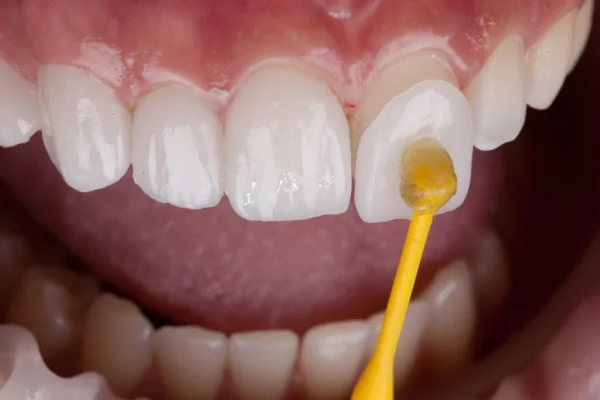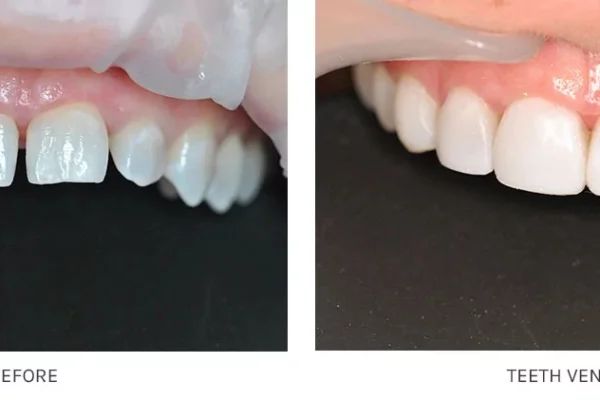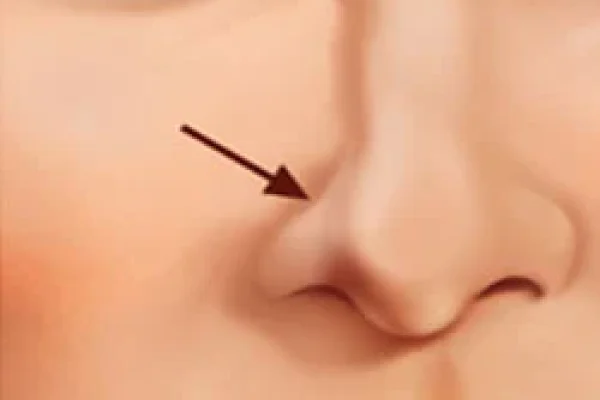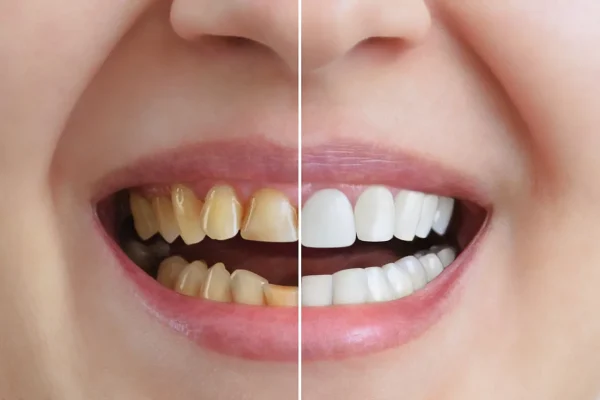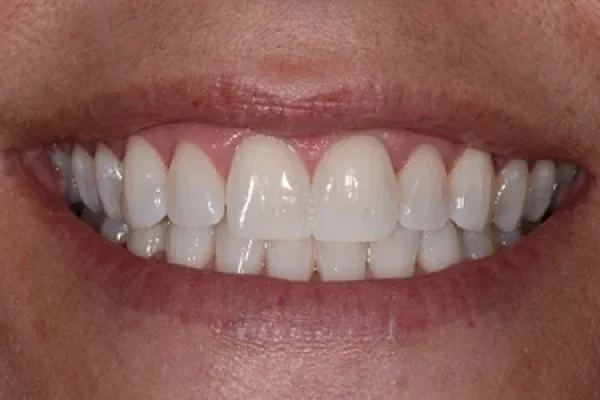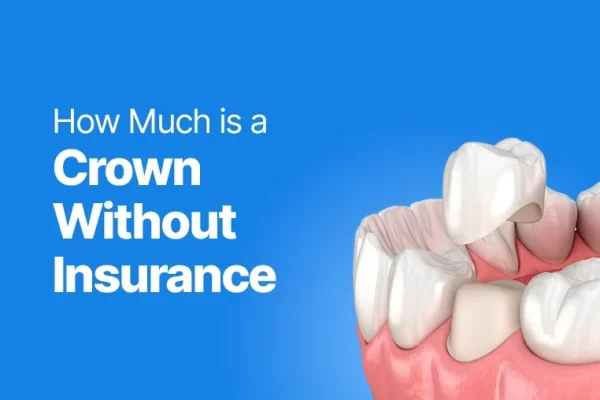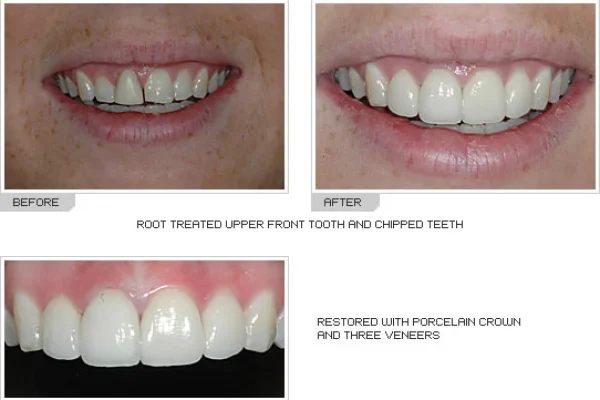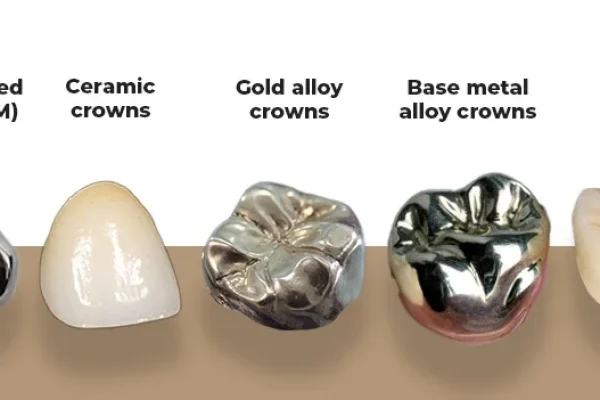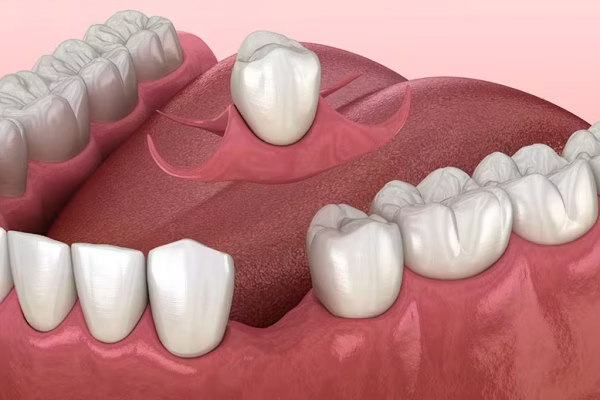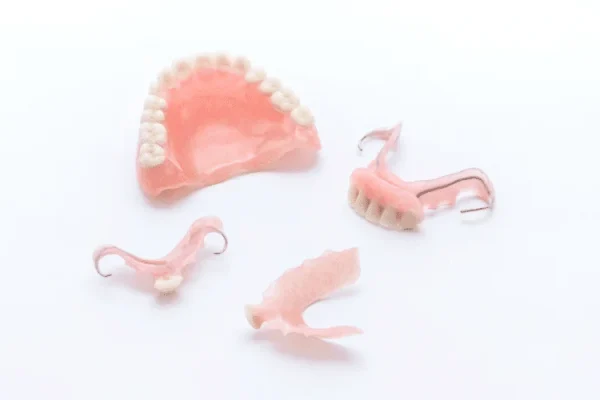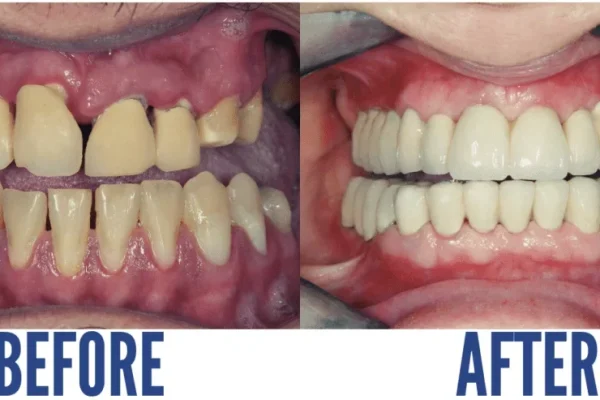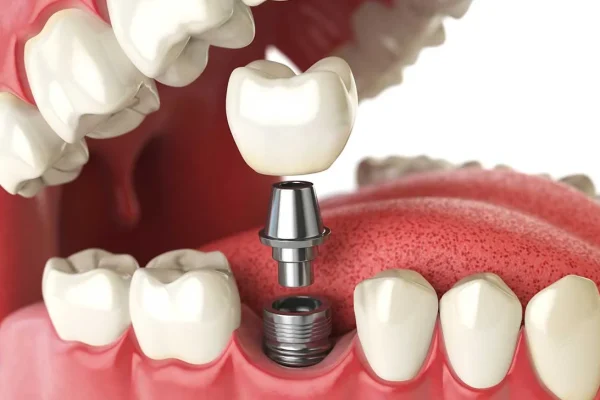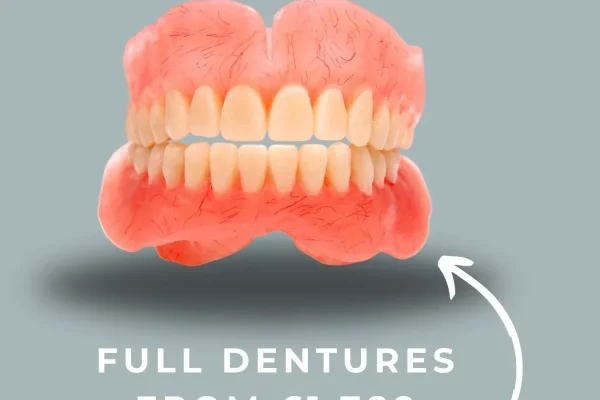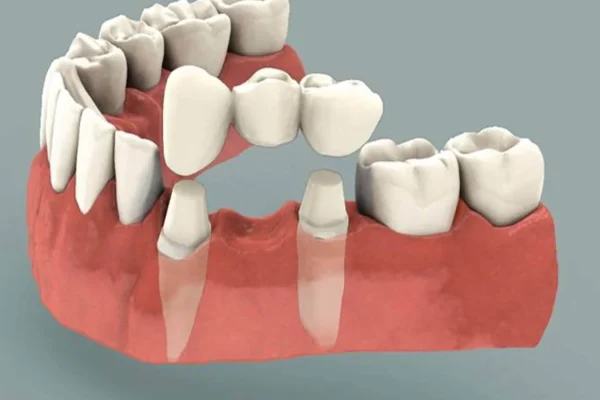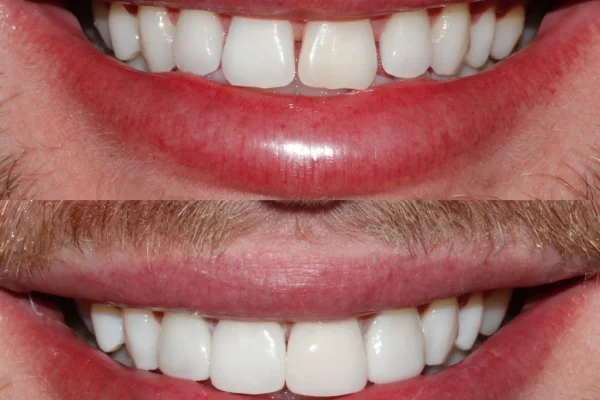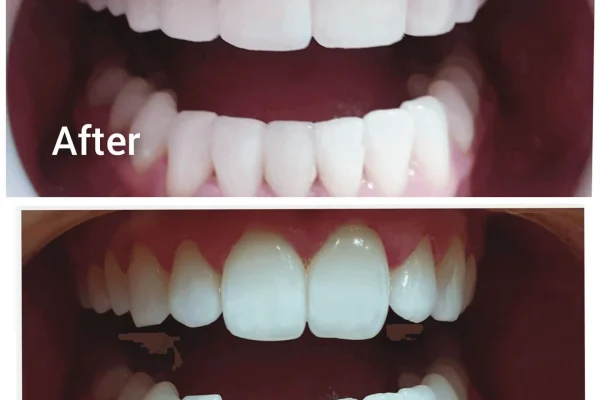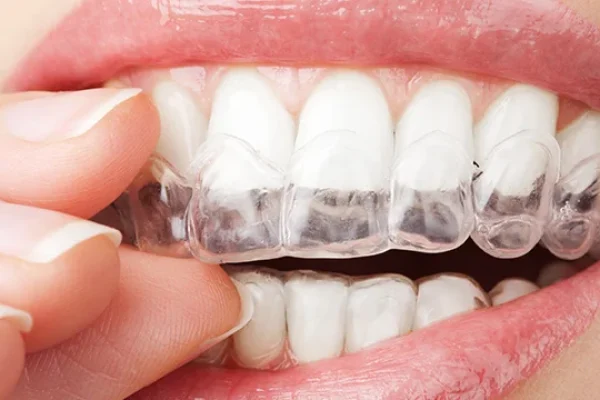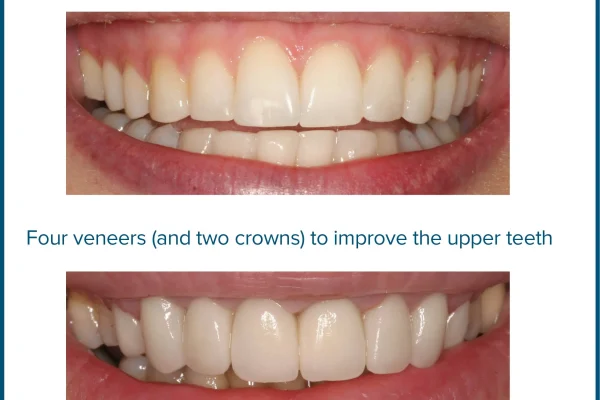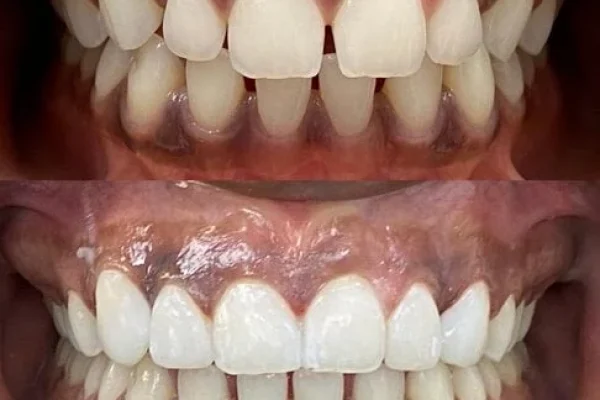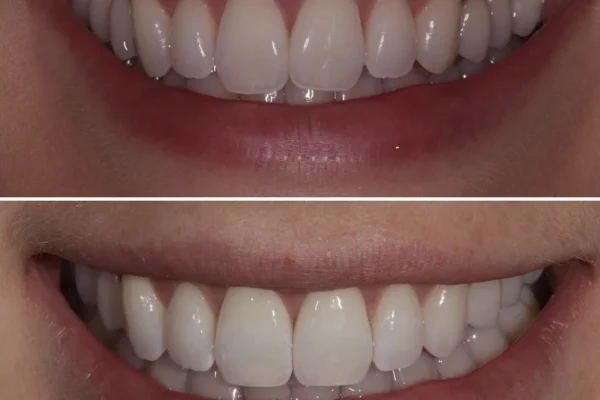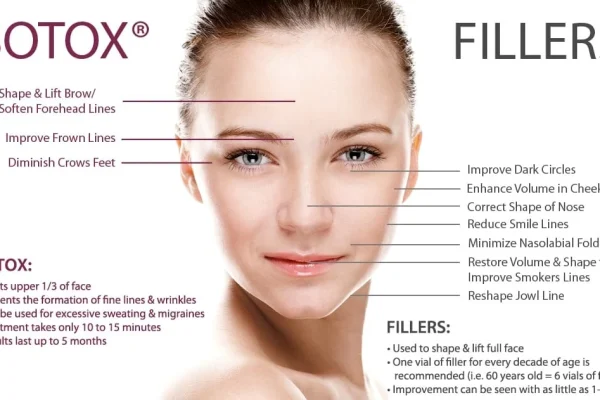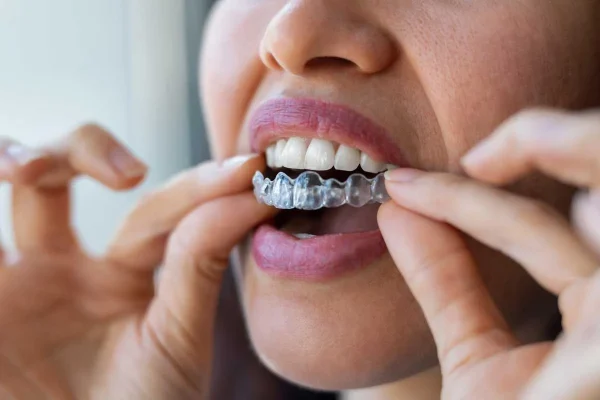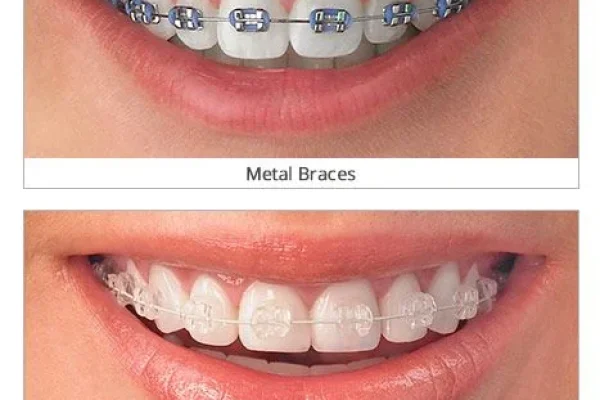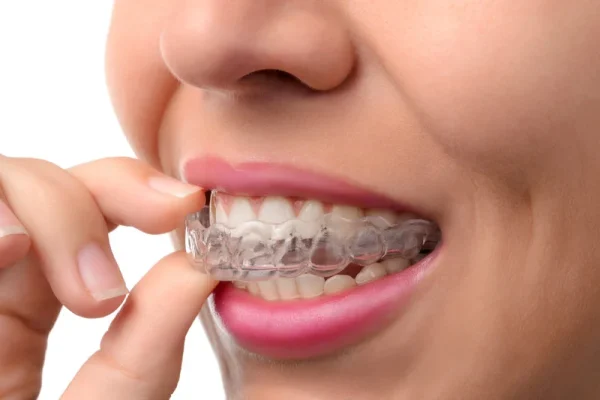
Table of Contents
ToggleKey Takeaways
-
- Veneer costs vary widely based on material (porcelain, composite, Emax), the number of veneers, dentist expertise, and geographic location.
-
- Porcelain veneers are generally more expensive (e.g., £650-£1200+ per tooth in the UK) but offer superior aesthetics and longer durability.
-
- Composite veneers provide a more affordable alternative (e.g., £250-£500 per tooth in the UK) and are often applied in a single dental visit.
-
- Costs for veneers in countries like Turkey can be significantly lower than in the UK, but this option requires thorough research and careful consideration of all factors.
-
- Various financing options, including monthly payment plans, are often available to make veneers more accessible. Cheaper alternatives like dental bonding or professional teeth whitening can also improve smiles for those on a tighter budget.
- The NHS in the UK rarely covers dental veneers as they are primarily considered a cosmetic treatment, not a clinical necessity.
What is the General Cost of Dental Veneers? Understanding the Basics
Let’s cut straight to the chase, shall we? You’re here because numbers matter, and the burning question on your mind is likely some variation of “how much are veneers?” or “what’s the actual veneer teeth price?” Before we plunge into the nuanced world of porcelain versus composite, or London chic versus Turkish delight, let’s establish a foundational understanding. Think of the “cost of veneers dental” as a spectrum, not a fixed point. As a very general ballpark figure, in the UK, you might see prices for a single veneer ranging anywhere from £250 for a basic composite to upwards of £1,200, or even more, for a high-end porcelain veneer crafted by a master ceramist and placed by a renowned cosmetic dentist. This initial range, broad as it is, underscores a critical point: the “cost of veneers dental” is deeply personal and situation-dependent.
A dental veneer, in essence, is a bespoke, wafer-thin facing, meticulously crafted to bond to the front surface of your tooth. Its purpose? To revolutionise your smile by concealing imperfections like chips, cracks, stubborn discolouration, minor misalignments, or unsightly gaps. It’s less about fixing a problem and more about crafting an aesthetic masterpiece. When people ask “how much do veneers cost,” they’re really asking about the investment required for this transformation. This section is designed to give you that initial, crucial orientation. The figures mentioned are just the tip of the iceberg; subsequent sections will meticulously break down costs by the specific type of veneer, the geographic location of your chosen clinic, the complexity of your individual case, and a host of other influential factors that collectively determine the final “veneer teeth price.” Understanding this baseline is the first step in effectively budgeting for the cosmetic improvements you desire, allowing you to move forward with clarity and confidence. The journey to a new smile begins with understanding the map, and right now, we’re marking the starting point.
What Key Factors Determine the Final Price of Dental Veneers?
Navigating the “cost of dental veneers” can feel like trying to pinpoint a chameleon on a rainbow – it’s ever-changing, adapting to a multitude of influential elements. It’s crucial to understand that the price tag attached to your dream smile isn’t plucked from thin air; it’s a carefully calculated sum reflecting a blend of science, artistry, and logistics. The “complete costs of veneers” are rarely a simple multiplication exercise. Instead, envision it as a bespoke suit: the fabric, the tailor’s skill, the intricacy of the design, and even the location of the atelier all play their part in the final quote. The primary architects of this cost structure are unequivocally the type of material chosen – the silky, durable porcelain versus the versatile, direct composite, for instance – the sheer number of veneers required to achieve your aesthetic goals, and, critically, the experience and artistry of the dental professional orchestrating the transformation. A seasoned cosmetic dentist, with a portfolio of breathtaking smiles and years of specialised training, will naturally command a higher fee, much like a celebrated artist.
Beyond these core components, the geographic coordinates of the dental clinic wield considerable influence. A practice nestled in London’s prestigious Harley Street, with its corresponding overheads, will invariably present a different cost structure compared to a clinic in a quieter suburban town. Furthermore, the intrinsic complexity of your individual dental narrative is a huge determinant. Are we talking straightforward application, or does your journey involve preliminary chapters, such as teeth whitening to establish a brighter baseline, gum contouring to perfect the frame, or even minor orthodontic adjustments to ensure the veneers sit flawlessly? These adjunctive treatments, while enhancing the final outcome, will contribute to the overall investment. And let’s not forget the role of technology. Clinics that invest in cutting-edge tools – think 3D intraoral scanners for pin-sharp impressions, CAD/CAM technology for in-house milling, or advanced smile design software – may factor these innovations into their pricing, often because they translate to superior precision, efficiency, and patient experience. Understanding these myriad factors is key to deciphering why one quote might differ vastly from another, and to appreciating the true scope of achieving those “complete costs of veneers.”
How Do Different Materials and Brands Affect Veneer Prices?
When it comes to the actual “veneer teeth cost,” the material you choose is arguably the star player, dictating not just the aesthetic outcome and longevity but also a significant chunk of the invoice. Porcelain veneers, the undisputed kings of the smile makeover realm, typically sit at the higher end of the price spectrum. Their cost reflects the intricate lab work involved; these aren’t churned out on a production line but are individually handcrafted by skilled dental ceramists. Each porcelain veneer is a miniature work of art, layered to mimic the natural translucency and light-reflecting properties of enamel, ensuring a result that’s virtually indistinguishable from (or often, an improvement upon) nature. This craftsmanship, combined with porcelain’s superior stain resistance and durability – often lasting 10 to 15 years or more with proper care – justifies its premium.
Then you have composite resin veneers. These are generally more wallet-friendly, primarily because the process is different. Often applied directly to the tooth and sculpted by the dentist in a single visit, they bypass much of the external lab expense. While modern composites offer excellent aesthetics, they may not possess the same lifespan or chameleon-like qualities as porcelain and can be more prone to staining or chipping over time, typically lasting around 5 to 7 years. However, they are a fantastic option for many, particularly for smaller corrections or for those seeking a more conservative approach as they often require less tooth preparation.
Beyond the base materials, specific brands can also command a premium, much like designer labels in fashion. Emax veneers, for example, crafted from a high-strength lithium disilicate glass-ceramic, are lauded for their exceptional durability and beautiful aesthetics, often placing them in the upper echelons of “Porcelain Veneer Costs.” Lumineers, another well-known brand, are ultra-thin porcelain veneers marketed for their minimal-to-no-prep application, meaning less alteration of your natural tooth structure. This specific technology and branding can also influence their price point. The correlation is clear: the higher the quality of the material, its aesthetic potential, the intricacy of its fabrication, and its projected durability, the greater the impact on the overall “veneer teeth cost.” It’s an investment in both beauty and longevity.
How Does the Dentist’s Expertise and Clinic Location Influence Cost?
The hands that craft your smile are just as critical as the materials they use, and this expertise is undeniably factored into the cost. Cosmetic dentistry is a realm where artistry and precision science perform an intricate ballet. A dentist who has dedicated years to postgraduate training in aesthetic dentistry, who possesses a rich portfolio showcasing consistently stunning transformations, and who has garnered a reputation for excellence will, quite rightly, reflect this calibre in their fee structure. You’re not just paying for the veneer itself; you’re investing in their vision, their meticulous attention to detail, and their ability to deliver a result that is not only beautiful but also functional and long-lasting. Think of it as commissioning a bespoke piece from a master craftsman versus buying off-the-shelf. This expertise often translates into a more predictable, harmonious, and durable outcome, which many patients deem a worthwhile investment for their “cost of veneers dental.”
Equally significant is the geographical postcode of the clinic. It’s simple economics: operational overheads vary wildly. A state-of-the-art practice in a prime metropolitan hub like London, particularly in a renowned medical district like Harley Street, faces substantially higher rental costs, staff wages, and general running expenses than a clinic in a smaller town or a less central urban area. These costs are inevitably woven into the pricing of their services, including veneers. When you “Receive A Cost Quote For Veneers Specific To Your Cosmetic Issue,” these locational factors are silently at play. The consultation itself is a key part of this; it’s where the dentist assesses your needs, discusses your aspirations, and outlines the specific treatment plan. This bespoke approach, tailored to your unique dental anatomy and aesthetic desires, is part of what defines premium dental care, and it’s during this detailed consultation that all these cost-influencing elements – including the dentist’s skill and the clinic’s standing – converge to form your personalised quote.
Does the Complexity of Your Dental Case Change the Overall Price?
Absolutely, unequivocally, yes. Your unique dental landscape is a fundamental character in the story of your veneer costs. If your teeth are relatively healthy, well-aligned, and require minimal preparation, the journey to placing veneers is more straightforward, and this simplicity is often reflected in the price. However, many individuals seeking veneers present with underlying complexities that need to be addressed to ensure the success and longevity of the final smile. These pre-existing dental conditions can significantly add to the procedure’s intricacy and, consequently, its cost. For instance, if your natural teeth are heavily discoloured, more extensive tooth preparation or the use of opaquer materials might be necessary to prevent the darkness from showing through the translucent veneers, requiring more chair time and specialised materials.
Furthermore, if your gums aren’t in optimal health, periodontal treatment will be a prerequisite before any cosmetic work can commence; healthy gums are the foundation of a beautiful and lasting smile. Should there be issues with your bite (occlusion) or significant misalignment of your teeth, these might need correction first. Sometimes, adjunctive treatments like a short course of orthodontic treatment (think clear aligners) may be recommended prior to veneer placement to achieve the most ideal aesthetic and functional outcome. Gum contouring, a procedure to reshape the gum line for a more even and harmonious smile, might also be suggested if you have a “gummy smile” or uneven gum levels. Each of these additional procedures, while crucial for a superior and durable result, represents an additional investment in time, skill, and resources, thereby contributing to the total investment. It’s not about upselling; it’s about comprehensive care that ensures your veneers not only look spectacular but are also built on a foundation of excellent oral health.
How Does the Choice of Veneer Type Impact the Total Expense?
The material world of veneers is wonderfully diverse, and your choice from this palette will be one of the most significant brushstrokes determining the final “cost of veneers dental.” This isn’t merely about picking a shade; it’s about selecting a technology, a durability profile, and an aesthetic character. As we delve deeper, exploring the “Cost of all types of veneer” or, more broadly, the “Cost Of Different Types Of Veneers,” you’ll see a clear pattern emerge: the intrinsic qualities of the material and the complexity of its application are inextricably linked to its price tag. Think of it like choosing between a bespoke Savile Row suit, a high-quality off-the-rack designer piece, or a more accessible high-street option. Each serves a purpose and caters to different priorities and budgets.
Porcelain, often hailed as the gold standard, generally commands a higher price due to its exceptional aesthetics, durability, and the intricate lab work involved in its creation. Then there are composite veneers, typically a more budget-conscious choice, applied and sculpted directly by the dentist. Specialised branded options like Lumineers, known for their ultra-thin, minimal-preparation requirements, or Emax veneers, celebrated for their superior strength and beauty, each come with their own specific cost implications, reflecting their unique manufacturing processes and clinical advantages. Even within porcelain, there are variations – traditional feldspathic, pressed ceramic, or zirconium-based – each with slightly different properties and price points. Understanding these distinctions is paramount. It empowers you to make an informed decision that aligns not only with your aesthetic aspirations but also with your financial comfort zone, ensuring that your investment yields the desired outcome in terms of both beauty and longevity. This section will act as your guide through this material maze, clarifying how each choice resonates on your final bill.
What is the Typical Cost Range for Porcelain Veneers?
When patients ask, “How much for a porcelain veneer?” or more broadly, “How Much Do Porcelain Veneers Cost?”, they’re tapping into the premier league of cosmetic dentistry. Porcelain veneers are the undisputed champions for achieving that truly transformative, dazzling, yet remarkably natural-looking smile. Consequently, they represent a more significant investment compared to some other options. In the UK, you can generally expect the cost for a single porcelain veneer to range from approximately £650 to £1,200, and sometimes even higher, depending on the factors we’ve previously discussed like dentist expertise and clinic location. This price tag isn’t arbitrary; it’s a reflection of several key attributes that set porcelain apart.
Firstly, the durability is exceptional. Well-maintained porcelain veneers can grace your smile for 10 to 15 years, often much longer, making them a long-term investment in your appearance and confidence. Secondly, their aesthetic qualities are unparalleled. Porcelain possesses a translucent quality that mimics the way natural tooth enamel reflects light, resulting in a vitality and depth that’s incredibly difficult to replicate with other materials. They are also highly resistant to staining, meaning your coffee, tea, or red wine habits are far less likely to tarnish your radiant smile over time, unlike natural teeth or composite alternatives. The intricate lab process is another major contributor to the cost. Each porcelain veneer is custom-fabricated by a skilled dental technician (a ceramist) in a dental laboratory. This involves meticulous layering of porcelain, custom shading to match or enhance your natural teeth, and precise shaping to create the perfect contour and fit. This artistry and technical skill demand time and expertise, which are factored into the final price. Given their blend of beauty, strength, and longevity, it’s no surprise that “How Much Do Porcelain Veneers Cost” remains one of the most frequent inquiries from those aspiring to a flawless smile.
How Much Do Composite Veneers Generally Cost?
For those seeking a more immediate and often more budget-friendly pathway to an enhanced smile, composite veneers present a compelling alternative. The “Composite Veneers Cost” is typically significantly lower than that of their porcelain counterparts, making them an accessible option for a wider range of individuals. In the UK, you might find the price for a single composite veneer (often referred to as composite bonding when applied directly) ranging from approximately £250 to £500 per tooth. This more approachable price point is largely due to the differences in the application process and material costs. Unlike porcelain veneers, which require external laboratory fabrication, composite veneers are usually applied directly to the tooth surface and sculpted by the dentist in a single appointment. This chairside artistry means reduced lab fees and fewer appointments, translating to savings for the patient.
However, this lower initial “Composite Veneers Cost” comes with certain trade-offs when compared to porcelain. While modern composite resins offer excellent aesthetic results and can beautifully address issues like chips, small gaps, or discolouration, they typically don’t boast the same lifespan as porcelain. Composite veneers may last around 5 to 7 years, and they can be more susceptible to staining and wear over time. They might also require more maintenance, such as occasional polishing, to retain their lustre. The aesthetic quality, while good, may not always achieve the same level of translucency and natural vitality as meticulously crafted porcelain. Despite these differences, composite veneers offer distinct advantages: they generally require minimal or no removal of natural tooth enamel, making them a more conservative treatment. They can also be repaired more easily if chipped. For many, the balance of affordability, immediacy, and aesthetic improvement makes composite veneers an excellent and highly satisfactory choice.
What Can You Expect to Pay for Lumineers?
Lumineers have carved out a specific niche in the cosmetic dentistry market, often promoted for their “minimal-prep” or even “no-prep” approach to smile enhancement. When considering “Lumineers Cost,” it’s important to understand what sets them apart. Lumineers are a particular brand of ultra-thin porcelain veneers, crafted from a patented cerinate porcelain, which is exceptionally strong even in very thin layers (reportedly as thin as a contact lens). This characteristic often allows dentists to place them with little to no grinding down of the natural tooth structure, a significant draw for patients hesitant about altering their healthy teeth. The question “how much do lumineers typically cost?” naturally follows. Given their branded nature, specialised fabrication process, and the specific training dentists undertake to offer them, Lumineers often sit within a similar price bracket to traditional high-quality porcelain veneers, and sometimes slightly above. In the UK, you might expect the “Lumineers Cost” per tooth to be in the range of £700 to £1,300, although this can vary.
The unique selling proposition of minimal tooth alteration is a key factor influencing their perceived value and cost. While this is a significant benefit for suitable candidates, it’s crucial to note that Lumineers may not be the ideal solution for every cosmetic dental issue. For instance, if significant reshaping or colour change is required, traditional veneers might offer a more predictable and aesthetically pleasing outcome. The cost reflects not only the material and the brand but also the specific technique involved. As with all veneer treatments, a thorough consultation with a certified Lumineers provider is essential to determine suitability and to receive an accurate quote based on your individual needs and the number of teeth involved. Their unique properties and application method mean that while they offer distinct advantages, their cost structure is aligned with premium porcelain solutions.
What About Emax or Zirconium Veneer Costs?
When exploring the landscape of advanced dental materials, Emax and Zirconium veneers stand out for their exceptional strength and aesthetic potential, positioning them at the premium end of the “cost of veneers dental” spectrum. Emax veneers, crafted from lithium disilicate ceramic, are highly prized in cosmetic dentistry for their remarkable combination of robustness and beauty. This material can be milled very thinly while retaining superior strength, often requiring less tooth preparation than some older porcelain types. Its optical properties are excellent, allowing for highly natural-looking restorations that blend seamlessly with existing teeth. Consequently, the cost of Emax veneers typically aligns with, or may even exceed, that of traditional high-quality feldspathic porcelain veneers. In the UK, you could anticipate Emax veneers to be in the £800 to £1,500 per tooth range, reflecting their superior material qualities and the precision required in their fabrication and placement. When people ask “How much do Emax Veneers cost in Turkey?”, they’ll find lower prices, but we’ll cover specific country costs later; for now, the UK context highlights their premium status.
Zirconium veneers, or more accurately, veneers with a zirconium substructure or milled entirely from zirconia, are renowned for their incredible toughness. Zirconia is one of the strongest dental materials available, making it an excellent choice for patients who may grind their teeth or require restorations that can withstand significant biting forces. It can also be effective in masking very dark underlying tooth discolouration. While early forms of zirconia were sometimes considered less translucent than Emax or feldspathic porcelain, modern advancements have greatly improved their aesthetic capabilities. The cost of Zirconium veneers is also in the premium bracket, often comparable to Emax, reflecting the advanced milling technology required and the material’s inherent qualities. The question “How much do Zirconium veneers cost in Turkey?” again points to a more affordable option abroad, but within the UK, expect a price point reflecting their high-performance nature. Both Emax and Zirconium represent top-tier choices for those prioritising maximum strength alongside excellent aesthetics.
How Much Do Laminate Veneers Cost?
The term “laminate veneers” often circulates in discussions about cosmetic dentistry, and it can sometimes cause a little confusion regarding its specific meaning and associated cost. In many contexts, “laminate veneer” is used almost interchangeably with “porcelain veneer.” It essentially describes the thin, shell-like facing that is bonded to the tooth – a lamination process, if you will. So, when you’re trying to determine “how much do laminate veneers cost?”, you’re often, in fact, asking about the cost of porcelain veneers in general. The price will therefore typically fall within the same range previously discussed for porcelain: roughly £650 to £1,200 per tooth in the UK, give or take, depending on all the usual influencing factors like material quality, lab artistry, dentist expertise, and clinic location.
Sometimes, “laminate veneer” is used more specifically to refer to particularly thin types of porcelain veneers, akin to the ultra-thin concept seen with brands like Lumineers, where minimal tooth preparation is a key feature. If this is the implication, the cost might still align with premium porcelain veneers because crafting extremely thin yet durable and aesthetically pleasing shells requires a high degree of skill from the dental technician and precise handling by the dentist. The “thinness” itself doesn’t automatically equate to “cheaper” if high-quality materials (like specific types of pressed ceramic or reinforced porcelain) and meticulous fabrication techniques are employed. The focus is on achieving a beautiful, durable result with conservative tooth preparation where possible. Therefore, unless specified as a distinct, budget-oriented material (which is rare for something termed a “laminate” in a high-quality context), assume the cost of laminate veneers will mirror that of standard or premium porcelain veneers, reflecting the skill, materials, and aesthetic outcome expected. A detailed consultation will always clarify the exact type of material being proposed under this term and its specific cost.
What is the Investment for a Full Set of Veneers or Multiple Teeth?
When the ambition extends beyond a single tooth correction to a comprehensive smile transformation, the conversation naturally shifts to the investment required for multiple veneers or what many term a “full set.” This is where queries like “How much do veneers cost for a full mouth?” take centre stage. It’s a significant undertaking, both in terms of the dental work involved and the financial commitment, but the results can be truly life-changing, delivering that seamless, harmonious, and dazzling smile often seen on the silver screen. It’s important to understand that calculating the cost for multiple veneers isn’t always a straightforward multiplication of the single veneer price. While the per-tooth cost remains a fundamental component, many dental practices may offer some form of package pricing or a slightly adjusted rate when a larger number of veneers (typically six or more) are being placed simultaneously.
This potential for adjusted pricing can be due to efficiencies of scale; for example, the laboratory might offer a better rate for fabricating a larger batch of veneers at once, or the dentist might factor in the streamlined workflow of addressing multiple teeth in fewer, more condensed appointments. “Defining the veneer costs for a full mouth or complete smile” involves a detailed consultation where the dentist will assess precisely how many veneers are needed to achieve your desired aesthetic outcome – often focusing on the “smile line,” which typically includes the 6 to 10 upper teeth most visible when you smile, and sometimes the corresponding lower teeth. This initial assessment is crucial for providing an accurate and comprehensive quote, ensuring there are no surprises down the line. The investment in a full set of veneers is substantial, but for many, the profound boost in confidence and the sheer joy of a perfected smile make it an invaluable one.
How Much Does a Full Mouth of Veneers Usually Cost?
When patients inquire, “What does a full set of veneers cost?” or “How much is a full mouth of veneers?”, they’re typically envisioning a comprehensive smile makeover. A “full set” doesn’t necessarily mean every single tooth in your mouth; more commonly, it refers to the veneers placed on the teeth that are visible when you smile broadly. This usually involves anywhere from 6 to 10 of the upper front teeth, and sometimes a similar number on the lower arch if they are prominent. The exact number is highly personalised, determined during your cosmetic consultation. Now, for the numbers: providing a precise, universal figure is tricky, as it depends heavily on the material chosen (porcelain being pricier than composite) and all the other factors we’ve discussed. However, to give you a realistic expectation in the UK, if you’re considering high-quality porcelain veneers, a set of 8 (a common number for an upper arch smile makeover) could range from approximately £5,200 (at £650 per veneer) to £9,600 (at £1,200 per veneer), or even more in premium clinics. For a more extensive transformation involving, say, 10 upper and 10 lower porcelain veneers, the investment would scale accordingly.
You might see figures like “Full set veneers cost £2,600-£3,600 usually” advertised. It’s crucial to scrutinise what such an offer entails. This price point might refer to a smaller number of veneers (perhaps 4-6), potentially made from composite material, or it could be an offer from a clinic in a lower-cost region or even abroad. For a comprehensive “Full Set of Teeth Veneers Costs, Prices & Photos Composite,” the overall investment would be lower than porcelain. For example, 8 composite veneers could range from £2,000 to £4,000. The key takeaway is that “how much is a full mouth of veneers?” has a wide answer range. Always seek a detailed, itemised quote that specifies the material, the number of veneers, and any associated procedures.
What is the Price for Veneers on a Specific Number of Teeth, like the Front Two?
Sometimes, a dramatic smile transformation isn’t the goal; perhaps you’re looking to correct a chip on a single front tooth, close a small gap between your two central incisors, or improve the appearance of just a couple of teeth that don’t quite match the rest. In such cases, the cost consideration narrows down to a smaller number of veneers, often one, two, or four. The pricing for these scenarios typically defaults to the per-tooth cost established by the clinic for the chosen material (porcelain or composite). So, if a single porcelain veneer is quoted at, say, £800, then two would logically be around £1,600, plus any consultation or preparatory fees. While package deals are more common for larger sets (6+ veneers), some clinics might have a slight minimum fee or a slightly higher per-unit cost for just one or two veneers due to the fixed setup and appointment time involved, though this isn’t always the case.
A significant challenge when placing just one or two veneers, especially on front teeth, is achieving a perfect colour and character match with the adjacent natural teeth. This requires exceptional skill from both the dentist and the dental technician, and this artistry is factored into the cost. Offers like “2 Front Teeth Veneer Costs Start From £X Per Month” often highlight the availability of dental finance plans, making even smaller treatments more manageable by spreading the cost over time (a topic we’ll explore in more detail later). For example, if you’re considering two high-quality porcelain veneers, the total investment in the UK might range from approximately £1,300 to £2,400. For composite bonding on two front teeth, the cost could be significantly lower, perhaps in the £500 to £1,000 range. The precision required for these smaller-scale enhancements is paramount, as these teeth are often the focal point of your smile.
How Does Geographic Location Significantly Impact Veneer Pricing?
Prepare for a journey across the map, because when it comes to the “cost of veneers dental,” your geographic coordinates play a starring role. The price tag for identical veneer treatment can vary dramatically not just from one country to another, but even between different cities or regions within the same nation. This isn’t arbitrary; it’s a reflection of a complex interplay of local economic conditions, the prevailing operational costs for dental practices, and the level of market competition. Think of it as the property market: a flat in central London commands a different price to a similar-sized property in a rural village. The same principle, to a degree, applies to dental services. For those seeking a truly comprehensive overview, resources and articles focusing on “Veneers cost: complete comparison by brands, materials, and countries” can be incredibly insightful, offering a bird’s-eye view of these global disparities.
The rise of dental tourism is a direct consequence of these price differences, with patients increasingly willing to travel to destinations where high-quality dental care, including veneers, is offered at a significantly lower price point than in their home countries. Factors such as average national income, currency exchange rates, local laboratory fees, dentists’ salary expectations, regulatory burdens, and the cost of indemnity insurance all contribute to these regional pricing structures. Understanding this geographic influence is crucial, whether you’re considering treatment locally or contemplating options further afield. It allows you to contextualise quotes and make informed decisions based on a broader understanding of the global dental market. This section will explore these variations, shedding light on why your location can be such a powerful determinant of the final bill.
What is the Average Cost of Dental Veneers in the UK, and Why Can it Be High?
If you’re based in the United Kingdom and find yourself typing “How much is veneers in the UK?” or “How much do veneers cost in the UK?” into your search bar, you’re joining a populous club. The “What is the average cost of dental veneers in the UK?” question is one we’ve touched upon, but let’s consolidate. For porcelain veneers, expect a range of £650 to £1,200+ per tooth, while composite veneers typically fall between £250 and £500 per tooth. These are averages, and you’ll find clinics above and below these bands. Now, let’s tackle the “why”: “Why are veneers so expensive in the UK?” Several robust reasons contribute to this. Firstly, the UK operates under stringent regulatory standards set by bodies like the General Dental Council (GDC) and the Care Quality Commission (CQC). Compliance with these high standards, while ensuring patient safety and quality of care, involves significant operational costs for clinics – from equipment sterilisation protocols to staff training and facility maintenance.
Secondly, the cost of professional indemnity insurance for dentists in the UK is substantial. Laboratory fees for custom-made restorations like porcelain veneers, particularly those crafted by highly skilled UK-based technicians using premium materials, are also a major component. Staff wages, reflecting the cost of living and the need for qualified dental nurses and support staff, further add to overheads. Furthermore, the investment in continuing professional development for dentists to stay abreast of the latest techniques and technologies is ongoing. Variations within the UK are also notable. “Veneer Cost | London,” especially in prestigious areas like Harley Street (“Porcelain Veneers Cost in Harley Street | 75 Harley Street”), will almost invariably be higher than in other cities or towns, reflecting steeper rental and operational expenses. Even specific offerings like “Porcelain Veneers London | Emax Veneers Cost UK” will highlight these premium city prices. It’s a confluence of high standards, skilled labour, material quality, and operational realities that shapes the cost landscape in the UK.
Average Cost of Dental Veneers in Albania
In Albania, the average cost of dental veneers ranges from €180 to €350 per tooth, depending on several factors such as the type of veneer, clinic reputation, and materials used. Here’s a breakdown:
| Type of Veneer | Average Price per Tooth |
|---|---|
| Composite Veneers | €100 – €180 |
| Porcelain Veneers | €250 – €350 |
| Emax Veneers | €300 – €400 |
Why Can the Cost Be High for Some Clinics in Albania?
Even though Albania is known for affordable dental tourism, some clinics may charge higher prices due to the following reasons:
1. High-Quality Materials
-
Premium materials like Emax or feldspathic ceramics imported from Germany, Switzerland, or Italy increase the cost.
-
These materials offer superior aesthetics, longevity, and strength.
2. Advanced Technology
-
Clinics using digital smile design, CAD/CAM systems, and 3D scanning may charge more to reflect the investment in cutting-edge equipment.
3. Expertise of the Dentist
-
Dentists with international certifications, specialized training, or experience abroad may charge premium rates due to higher skill levels.
4. Laboratory Quality
-
Veneers fabricated in top-tier dental labs (local or European) cost more due to precision craftsmanship and aesthetic detailing.
5. Customization and Aesthetics
-
Highly aesthetic veneers require individual tooth customization, color layering, and trial fittings—all of which increase the cost.
6. Clinic Location and Reputation
-
Clinics located in central Tirana or those catering to international patients may have higher operating costs and pricing to match their branding.
7. Package Inclusions
-
Some clinics offer full packages that include:
-
Consultation
-
X-rays or 3D scans
-
Temporary veneers
-
Accommodation & transfers (for international patients)
-
While Albania remains cheaper than Western Europe (e.g., UK: €800–€1,200 per veneer), prices can still be high in premium clinics due to quality, expertise, and customization. Always evaluate not just the price—but the experience, results, and materials used.
How Much Do Veneers Cost in Turkey, and What About Package Deals?
Turkey has rapidly emerged as a global hotspot for dental tourism, and a primary driver for this is the significantly lower “cost of veneers dental” compared to many Western European countries, including the UK. If you’re wondering “How much do veneers cost in Turkey?” or “How much do veneers cost from Turkey?”, the answer is often compellingly attractive. For porcelain veneers, prices in Turkey can range from as little as £180 to £400 per tooth, and for premium options like Emax or Zirconium, you might see prices from £250 to £500 per tooth. This represents a substantial saving. Many Turkish clinics amplify this appeal by offering all-inclusive package deals. The question “How much does the Veneers Turkey Package Price?” often reveals offers that bundle the cost of the veneers with accommodation, airport transfers, and sometimes even local transportation, simplifying the logistics for international patients.
So, “Why Are Turkey Veneers So Cheap?” Several factors contribute: lower labour costs (including dentists’ and technicians’ salaries), significantly reduced overheads for clinic operations, a favourable currency exchange rate for many international visitors, and sometimes government support for the medical tourism sector. Clinics can achieve economies of scale due to the high volume of international patients. You’ll find specific queries like “How much do Emax Veneers cost in Turkey?” or “How much do Zirconium veneers cost in Turkey?” consistently yield figures much lower than UK equivalents. Titles like “How Much Do Veneers From Turkey Cost? (Exact Prices 2025) – UK Smiles” aim to provide current insights. However, while “The price of dental veneers in Turkey” is a major draw, it’s crucial to approach dental tourism with thorough research and caution. Consider aspects like the clinic’s accreditation, the dentist’s qualifications and experience, the materials used, language communication, and, critically, arrangements for aftercare and managing any potential complications once you’ve returned home. The savings can be significant, but due diligence is paramount.
What Are the Dental Veneer Prices in Other Countries, such as Spain or Hungary?
Beyond the UK and Turkey, several other European countries have established themselves as popular destinations for dental tourism, offering a middle ground in terms of cost and accessibility for those exploring “cost of veneers dental” options abroad. Spain and Hungary are two notable examples. “The price of dental veneers in Spain” can be quite competitive, often sitting somewhere between the higher costs found in the UK and the very low prices available in Turkey. You might expect to pay approximately €400 to €800 per porcelain veneer in Spain, depending on the clinic’s location (major cities vs. coastal resorts) and reputation. Spain offers the allure of combining dental treatment with a holiday, and many clinics cater specifically to international patients with multilingual staff.
Hungary, particularly Budapest, has a long-standing reputation as a hub for high-quality, affordable dental care. “The price of dental veneers in Hungary” is also attractive, with porcelain veneers potentially costing in the range of €350 to €700 per tooth. Hungarian dentists are often highly trained, and clinics are typically modern and well-equipped. Both Spain and Hungary benefit from being within the EU (for now, in terms of established travel routes and some regulatory oversight, though this is evolving for UK travellers), which can provide a degree of reassurance for some patients. When looking at broader comparisons like “How Much Do Veneers Cost In Turkey, UK, USA & Canada In 2024,” these Eastern and Southern European countries often present a compelling balance of quality and value. Other destinations like Poland and the Czech Republic also offer competitive pricing. As with any decision to seek treatment abroad, thorough research into clinics, dentist credentials, patient reviews, material quality, and aftercare protocols is absolutely essential to ensure a safe and satisfactory outcome.
What Payment Options and Financing Plans Are Available for Veneers?
The decision to enhance your smile with veneers is exciting, but the accompanying “cost of veneers dental” can feel like a significant hurdle. It’s an investment, undoubtedly, and for many, paying the full sum upfront simply isn’t feasible or desirable. Recognising this, the dental industry, particularly private cosmetic practices, has embraced a variety of payment solutions designed to make transformative treatments like veneers more accessible. The good news is that “Ways to pay for veneers” are often more diverse and flexible than you might imagine. Dental clinics understand that financial planning is a key part of the patient journey, and they strive to offer options that can alleviate the immediate financial pressure, allowing you to proceed with your desired treatment without undue stress.
From traditional payment methods to specialised dental finance plans that break down the cost into manageable monthly instalments, the goal is to provide a pathway to affordability. Many clinics partner with third-party finance providers, while others might offer in-house arrangements for certain treatments or payment stages. The availability of these options means that a dream smile doesn’t necessarily have to remain a dream deferred due to financial constraints. This section will explore the common payment avenues and financing plans, empowering you with the knowledge to discuss these possibilities confidently with your chosen dental provider and find a solution that aligns with your budget and lifestyle. Understanding these financial tools is just as important as understanding the clinical aspects of your veneer treatment.
Can You Pay Monthly for Veneers, Particularly in the UK?
A resounding “yes!” is the straightforward answer to the frequently asked question, “Can you pay monthly for veneers UK?” The prospect of spreading the “cost of veneers dental” over a period of time, rather than facing a single lump sum, has made cosmetic dentistry, including veneers, significantly more attainable for many people across the United Kingdom. Most private dental clinics offering cosmetic treatments like porcelain or composite veneers will provide access to “Paying for Veneers with dental finance.” These “Dental veneers on finance – pay monthly options” are typically facilitated through specialist third-party credit providers who partner with dental practices. These companies are experienced in healthcare financing and offer plans specifically tailored for medical and dental procedures.
The process usually involves a straightforward application, often completed online or at the clinic, with a quick decision on eligibility, typically based on a credit check. Many of these finance plans come with attractive terms, such as an initial interest-free period (e.g., 0% APR for 6, 10, or 12 months). For more extensive treatments or longer repayment periods, interest-bearing loans are also available, allowing you to spread the cost over several years. You’ll often see clinics advertising attractive headline rates, such as “Veneer Costs | From £360 | Finance Available” or “Veneer prices as low as £8.13 per month.” These figures illustrate how a substantial overall cost can be broken down into much smaller, more manageable regular payments. It’s crucial, of course, to thoroughly read and understand the terms and conditions of any finance agreement, including the APR, total amount repayable, and any fees, before committing. But the widespread availability of these monthly payment plans has undoubtedly democratised access to smile-enhancing treatments.
Can You Pay Monthly for Veneers, Particularly in Albania?
✅ Options for Paying Monthly in Albania
1. In-House Financing
-
Some clinics offer interest-free installment plans over 3–6 months.
-
Often requires a deposit upfront (e.g., 30–50%) with the remainder split over the treatment timeline.
2. Third-Party Financing (Rare)
-
A few high-end clinics partner with local banks or medical financing companies.
-
Plans may allow you to pay over 6–24 months.
-
These typically require:
-
Proof of income or employment
-
Albanian residence or a local bank account (limiting for foreigners)
-
3. Custom Agreements for Foreigners
-
Clinics serving dental tourists may offer tailored plans such as:
-
Split payments (e.g., 50% on first visit, 50% on final fitting)
-
Multi-phase treatments spread over months to manage costs
-
⚠️ Important Considerations
-
Monthly payments are more likely for locals than for short-stay international patients.
-
Some clinics require full payment before final cementation of veneers.
-
Insurance does not cover veneers as they’re cosmetic, so payment plans are a helpful workaround.
-
Always get terms in writing, especially if you’re planning treatment from abroad.
Tips for Patients Considering Monthly Payments
-
Ask clinics directly if they offer:
-
Installments
-
Deferred payments
-
Partnerships with Albanian financial providers
-
-
Look for clinics in Tirana or Durrës, where international services and flexible payment options are more common.
-
If you’re an expat or staying long-term, you’re more likely to access local financing options.
✅ Summary
| Payment Option | Availability | Best For |
|---|---|---|
| In-house installments | Common in premium clinics | Local and foreign patients |
| Bank or third-party financing | Limited | Albanian residents only |
| Split treatment payments | Often negotiable | Dental tourists |
What Are Common Payment Methods Accepted for Getting Porcelain Veneers?
When considering “What Payment Methods are There for Getting Porcelain Veneers?”, you’ll find that most private dental clinics offer a range of conventional and specialised options to accommodate the significant investment involved. Beyond the increasingly popular dental finance plans we’ve just discussed, clinics will, of course, accept standard payment methods. These include:
- Major debit cards
- Credit cards (Visa, Mastercard, American Express)
- Direct bank transfers
Some patients may opt to use personal savings accumulated specifically for their smile transformation.
For those looking beyond immediate payment or standard finance, personal bank loans are another route, though it’s wise to compare the interest rates and terms with those offered by dedicated dental finance providers, who often have more competitive arrangements for treatment costs. Some clinics, particularly for extensive treatment plans, might offer their own in-house phased payment schedules, where you pay for stages of the treatment as they are completed, though this is less common for the full cost of veneers which often involves significant upfront lab fees for the clinic. While less prevalent in the UK for purely cosmetic procedures compared to countries like the USA, if you have a comprehensive private health insurance plan with specific dental riders, it’s worth checking if any portion of veneer treatment might be covered, especially if there’s a restorative element (e.g., replacing a failing old veneer or restoring a damaged tooth where a veneer is deemed clinically appropriate by the insurer). However, for purely aesthetic enhancements, this is rare. The key is that clinics are generally flexible and will discuss all available “Ways to pay for veneers” during your consultation to find the most suitable approach for your circumstances.
Facing Affordability Issues? What Cheaper Alternatives Exist for Improving Your Smile?
The allure of a perfect smile is powerful, but the “cost of veneers dental,” particularly for premium options like porcelain, can be a significant barrier for many. If you’ve found yourself asking, “How can I fix my teeth if I don’t have money?” or feeling disheartened by the potential expense, take heart. The journey to a more confident smile doesn’t exclusively travel down the veneer highway. There are numerous, more affordable pathways to enhancing your dental aesthetics, even when navigating financial constraints. It’s about understanding the spectrum of available treatments and identifying those that can deliver a tangible improvement within your budget. This section is dedicated to exploring those “cheaper alternatives,” providing hope and practical solutions for individuals who feel that a smile they love is out of reach.
Perhaps traditional veneers aren’t the right fit for your current financial situation, but that doesn’t mean you have to put your smile aspirations on hold indefinitely. From less invasive cosmetic procedures that offer remarkable results at a fraction of the cost, to understanding how to access essential dental care when “how to fix your teeth when you’re poor?” becomes a pressing concern, we aim to provide a compassionate and informative guide. The goal is to illuminate options that can brighten your smile and boost your confidence without breaking the bank, ensuring that everyone has the opportunity to feel good about their teeth. Let’s explore these more accessible routes to a happier, healthier-looking smile.
Is There a Cheaper Option Than Traditional Veneers for a Smile Makeover?
Yes, absolutely! If traditional porcelain veneers feel financially out of reach, several highly effective and more affordable alternatives can still deliver a significant smile makeover. One of the most popular and versatile options is composite bonding (also known as direct composite veneers). As discussed earlier, composite resin is applied directly to the teeth and sculpted by the dentist in a single visit. This technique is excellent for repairing chips, closing small gaps, reshaping teeth, and improving overall tooth colour. The “Composite Veneers Cost” is considerably less than porcelain – often half the price or even lower per tooth – making it a fantastic entry point for cosmetic enhancement. While not as durable or stain-resistant as porcelain, composite bonding offers beautiful, immediate results and is a more conservative treatment as it typically requires less enamel removal.
Another powerful yet relatively inexpensive option is professional teeth whitening. If your main concern is discolouration or yellowing, professional whitening supervised by a dentist can dramatically brighten your smile by several shades. The cost is significantly lower than veneers, and the impact on your overall appearance can be profound. For issues related to crookedness or misalignment, orthodontic treatment might be a more suitable long-term solution than veneers, which primarily address surface aesthetics. While comprehensive orthodontic treatment can be an investment itself, options like clear aligners for minor corrections, or focusing treatment on just the front “social six” teeth, can sometimes be more affordable than a full set of porcelain veneers and address the root cause of the misalignment. Often, a combination approach, such as whitening followed by selective composite bonding, can achieve a stunning smile makeover at a much more accessible price point than a full set of porcelain veneers.
What is the Cheapest Way to Get Veneers or Similar Aesthetic Results?
When considering “the cheapest way to get veneers” directly, composite veneers (or direct composite bonding) generally take the crown. As highlighted, their chairside application, minimal lab involvement, and lower material cost make them the most budget-friendly option for achieving a veneer-like aesthetic improvement. They offer a tangible transformation for issues like chips, gaps, and discolouration at a price point that is often significantly more accessible than porcelain. However, if you’re looking for “similar aesthetic results” on an even tighter budget, and a less permanent solution is acceptable, then snap-on smiles (also known by various brand names) could be explored, albeit with significant caveats. These are removable appliances, custom-made from a dental resin, that fit over your natural teeth. They offer an instant (though not always entirely natural-looking) smile transformation without any drilling or bonding. The cost is typically much lower than even composite veneers.
However, it’s crucial to understand that snap-on smiles are a temporary cosmetic fix, not a dental treatment. They can feel bulky, may affect speech, and require meticulous hygiene to prevent issues with your underlying natural teeth. They are not designed for constant wear or for eating all types of food. For truly “cheap” options, particularly those advertised from unregulated overseas sources or DIY kits, extreme caution is advised. The risks of damage to your natural teeth, poor fit, and unsatisfactory results are very high. When it comes to your dental health and appearance, “too good to be true” often is. Prioritising safe, professionally administered treatments, even if they are simpler alternatives like professional whitening or a single composite bond to address a specific concern, is always the wiser long-term strategy over potentially harmful ultra-cheap fixes.
How Can You Address Decaying Teeth in the UK if You Can’t Afford Extensive Private Work?
This is a critical question that moves beyond cosmetic desires into the realm of essential oral health: “What to do if your teeth are rotting and you can’t afford to fix it in the UK?” If you’re facing tooth decay and financial constraints prevent you from accessing private dental care, your first port of call should be the NHS (National Health Service). While the NHS has limitations on purely cosmetic treatments, it is designed to provide clinically necessary dental care to maintain oral health, which absolutely includes addressing tooth decay. NHS dental charges are significantly subsidised compared to private fees and are categorised into bands. Treatments for decay, such as fillings, root canal treatments (if deemed necessary and feasible), and extractions, fall under these NHS bands. Accessing an NHS dentist can sometimes be challenging due to high demand, but it remains the primary route for affordable, essential dental care.
Another avenue to explore, particularly in larger cities, is treatment at dental hospitals or university dental schools. Here, dental students perform treatments under the close supervision of qualified and experienced dental professionals. The costs at these institutions are often considerably lower than private practice, and sometimes even NHS charges, or may even be free for certain treatments depending on the teaching needs. However, be prepared for potentially longer waiting lists and more protracted appointment times, as it is a teaching environment. Community Dental Services also exist to provide care for individuals who may have difficulty accessing regular dental services due to disability or complex medical conditions. Crucially, don’t delay seeking help for decaying teeth. The problem will only worsen, leading to pain, infection, and potentially more complex and expensive treatments down the line. Prioritise your oral health by exploring these accessible avenues.
As an Alternative for Tooth Replacement, How Much is a Full Set of Private Dentures in the UK?
When tooth loss is extensive, and options like multiple implants or extensive bridgework (let alone full mouth veneers if remaining teeth are unsalvageable) are financially prohibitive, dentures offer a well-established and more affordable solution for restoring function and appearance. If you’re considering “a full set of dentures private in the UK,” meaning both upper and lower dentures to replace all teeth, the cost can vary based on the materials used, the complexity of your case, and the expertise of the dentist or clinical dental technician. Privately made dentures often offer superior fit, comfort, and aesthetics compared to basic NHS options, utilising higher-quality acrylics and more natural-looking teeth. For a full set of private dentures in the UK, you might expect the cost to range from approximately £1,000 to £3,000+, with some premium, highly customised options potentially costing more.
While dentures serve a different primary purpose to veneers (replacing missing teeth versus covering existing ones), they are a relevant consideration in the context of affordability for individuals facing widespread tooth loss. Compared to the cost of full mouth dental implants, which can run into tens of thousands of pounds, dentures represent a significantly more accessible financial undertaking. Partial dentures, for replacing a few missing teeth, would cost less than a full set. It’s important to remember that there’s an adjustment period when getting used to dentures, and they require regular cleaning and maintenance, and may need relining or replacement over time. However, for many, they provide a life-enhancing solution, restoring the ability to eat, speak, and smile with confidence at a manageable price point.
Is it Possible to Get Veneers on the NHS in the UK?
This is a very common and understandable question, especially given the potential “cost of veneers dental” in the private sector: “Can you get full veneers on NHS?” or even, “Can you get veneers on NHS?” for just a single tooth? The straightforward answer, in most circumstances, is no. The National Health Service in the UK operates on the principle of providing clinically necessary dental treatment to secure and maintain oral health. Purely cosmetic procedures, those undertaken solely to improve the appearance of teeth without an underlying health need, are generally not covered by NHS funding. Veneers, in the vast majority of cases, fall into this cosmetic category. Their primary purpose is aesthetic enhancement – to change the colour, shape, or apparent alignment of teeth.
NHS dental treatments are categorised into bands, covering things like examinations, fillings, root canals, crowns (where clinically essential, for example, to save a heavily broken-down tooth), and dentures. Veneers are not typically included in these standard NHS provisions. However, there can be extremely rare exceptions. For instance, if a front tooth is significantly damaged due to trauma (an accident), and a veneer is deemed by the NHS dentist to be the most clinically appropriate and conservative way to restore its function and protect it from further damage, there might be a slim possibility of it being considered. Even in such cases, a crown might be deemed more suitable by NHS criteria. The key determinant is “clinical necessity” as defined by NHS guidelines, not the patient’s desire for an improved appearance. So, if your motivation for veneers is purely to achieve a more beautiful smile, you will almost certainly need to explore private treatment options.
Is it Possible to Get Veneers on the NHS in Albania?
Public Dental Care in Albania: What’s Included
According to the World Health Organization (WHO), Albania’s public dental services primarily cover:
-
Emergency dental care (e.g., extractions, pain relief)
-
Basic restorative treatments (e.g., fillings)
-
Preventive care for children (e.g., fluoride treatments)
Advanced or cosmetic procedures—including veneers, crowns, bridges, and implants—are generally not included in the public health benefit packages.
Private Veneer Options in Albania
For those seeking veneers, private dental clinics in Albania offer a range of options at competitive prices:
-
Composite veneers: Starting from €140–€200 per tooth
-
Porcelain or Emax veneers: Typically €250–€350 per tooth
These prices are significantly lower than in Western Europe, making Albania a popular destination for dental tourism.
Financing and Payment Plans
While public funding isn’t available for veneers, many private clinics offer flexible payment options:
-
In-house installment plans: Some clinics allow payments to be spread over several months.
-
Split payments: Commonly, clinics require a deposit upfront, with the balance paid upon completion.
It’s advisable to discuss payment options directly with the clinic to find a plan that suits your needs.
✅ Summary
| Service | Public Coverage | Private Clinics |
|---|---|---|
| Emergency Extractions | ✅ Yes | ✅ Yes |
| Basic Fillings | ✅ Yes | ✅ Yes |
| Veneers (All Types) | ❌ No | ✅ Yes |
| Payment Plans | ❌ No | ✅ Sometimes |
If you’re considering veneers in Albania, it’s best to consult directly with private clinics to explore your options and find a solution that fits your budget and aesthetic goals.
What is the Cost Difference Between Getting New Veneers and Replacing Old Ones?
The question of “The price of new vs replacement veneers” or “What is the Cost of New vs Replacement Veneers?” is pertinent for anyone who already has veneers or is considering them as a long-term solution. It’s not always a simple case of paying the same price again. Several factors can influence whether replacing old veneers costs more, less, or about the same as your initial set. Firstly, the condition of your existing veneers and, more importantly, the health of the underlying natural teeth are paramount. If the old veneers are simply at the end of their lifespan but the teeth underneath are healthy and require minimal repreparation, the cost might be similar to getting new veneers, perhaps with a small additional fee for the careful removal of the old ones. The removal process itself can vary in complexity; well-bonded veneers require meticulous work to remove without damaging the underlying tooth.
However, if complications have arisen since the original veneers were placed – such as decay around the margins of the veneers, gum recession exposing the tooth neck, or if the underlying tooth structure has been compromised – then additional treatments will be necessary before new veneers can be placed. This could involve fillings, root canal treatment, gum treatments, or building up the tooth structure. These adjunctive procedures will, of course, add to the overall cost of replacement. Furthermore, if you are upgrading the material – for instance, replacing old composite veneers with new, higher-quality porcelain veneers – then the cost will naturally reflect the price of the superior material and associated lab fees. Generally, patients should budget for at least the cost of a new set of veneers, plus a contingency for the removal process and any unforeseen remedial work that might be required once the old veneers are off. A thorough assessment by your dentist is essential to get an accurate quote for replacement.
Considering the Investment, Are Dental Veneers Worth the Money?
This is the ultimate million-dollar question (though hopefully not literally!): “Are dental veneers worth the money?” The answer is deeply personal and hinges on individual priorities, expectations, and the perceived value of the outcomes they deliver. From a purely objective standpoint, high-quality veneers, particularly porcelain, offer significant aesthetic improvements – correcting discolouration, chips, gaps, and minor misalignments to create a harmonious, often dazzling, smile. This transformation can have a profound impact on self-confidence, influencing how you interact socially and professionally. For many, the ability to smile freely without self-consciousness is an invaluable asset, making the “cost of veneers dental” a justifiable investment in their overall well-being and quality of life. The durability of well-crafted porcelain veneers, often lasting 10-15 years or more with good care, also contributes to their long-term value proposition; it’s not a fleeting fix but a lasting enhancement.
However, it’s crucial to weigh these benefits against the financial commitment. Veneers are not an insignificant expense. Prospective patients should consider their financial stability and whether the cost aligns with their overall budget and life goals. The longevity of different veneer types also plays a role in assessing value; while composite veneers are cheaper initially, they may need replacing more frequently than porcelain, potentially altering the long-term cost equation. The “worth” also depends on realistic expectations and choosing a skilled, reputable dentist who can deliver the desired results safely and effectively. If undertaken for the right reasons, with a clear understanding of the costs and benefits, and with a commitment to maintaining good oral hygiene, many people find that dental veneers are indeed worth every penny for the confidence and joy their new smile brings. Ultimately, it’s a balance between tangible aesthetic improvement and intangible psychological uplift.
Frequently Asked Questions About ‘cost of veneers dental’
-
-
How much do veneers typically cost per tooth?
The cost per tooth varies significantly based on material, location, and dentist expertise. In the UK, expect a general range of £250-£500 for composite veneers and £650-£1,200+ for porcelain veneers per tooth.
-
-
-
What is the average cost of veneers in the UK?
As mentioned, for porcelain, the average is roughly £650-£1,200+ per tooth. For composite, it’s around £250-£500 per tooth. A full smile makeover with multiple porcelain veneers can range from £5,000 to over £10,000.
-
-
-
What are the main factors that affect the cost of dental veneers?
The primary factors include: the type of material used (e.g., porcelain, composite, Emax), the number of veneers required, the skill and experience of the dentist, the geographic location of the clinic, the complexity of your individual case (including any preparatory treatments), and laboratory fees for custom fabrication.
-
-
-
How much should I expect to pay for porcelain veneers?
In the UK, you should generally expect to pay between £650 and £1,200 per porcelain veneer. Premium clinics or highly specialised cosmetic dentists may charge more. This reflects the material quality, artistry involved, and durability.
-
-
What is the estimated cost for a full set of veneers?
A “full set” (e.g., 6-10 upper veneers) in porcelain could cost anywhere from approximately £3,900 (for 6 at the lower end) to £12,000+ (for 10 at the higher end or more). For composite, a similar set might range from £1,500 to £5,000. Always get a personalised quote.





